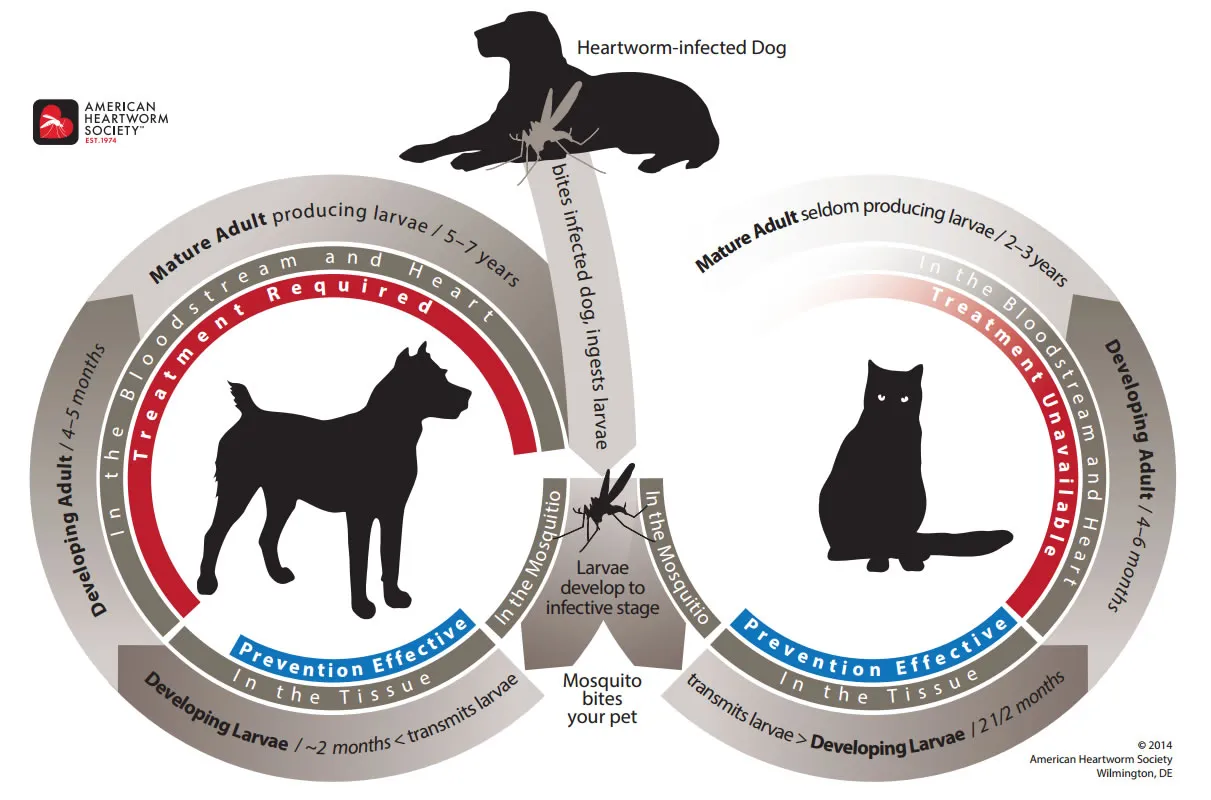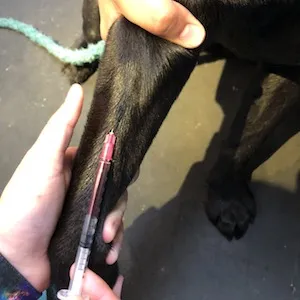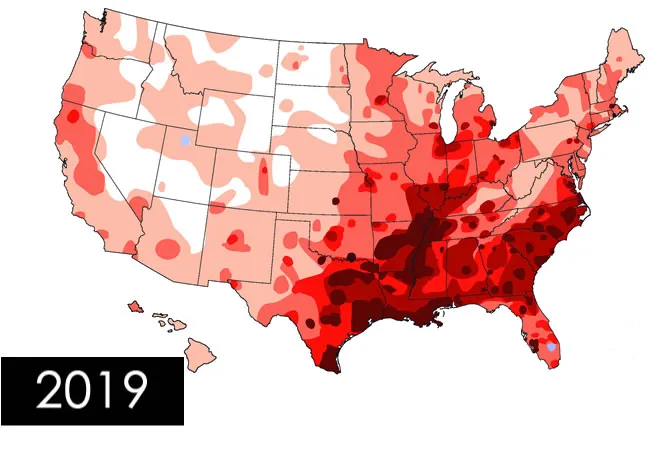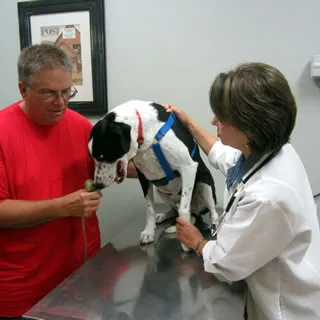Heartworm disease in dogs is a serious, potentially fatal condition caused by parasitic worms that reside in the heart, lungs, and blood vessels. Transmitted primarily through mosquito bites, this disease affects not only dogs but also cats and ferrets, leading to severe lung damage, heart failure, and organ complications. As pet owners, understanding heartworm disease in dogs is crucial for early detection and prevention, especially since cases have been reported in all 50 U.S. states and beyond. For dogs with underlying heart issues, exploring options like best dog food for dogs with heart disease can support overall cardiac health alongside preventive measures.
This comprehensive guide draws from expertise recommended by the American Heartworm Society (AHS), emphasizing year-round prevention to safeguard your furry companions.
What Is Heartworm Disease?
Heartworm disease is triggered by foot-long worms (Dirofilaria immitis) that thrive in the pulmonary arteries, heart, and lungs of infected pets. Dogs serve as the natural host, where worms mature, reproduce, and multiply—sometimes reaching hundreds in number. This infestation causes irreversible damage to the cardiovascular system, even after treatment.
In cats, the disease manifests differently as an atypical host; few worms reach adulthood, but immature larvae trigger heartworm-associated respiratory disease (HARD), mimicking asthma. Ferrets, with their tiny hearts, suffer devastating effects from even a single worm.
 Heartworms visible in affected tissue
Heartworms visible in affected tissue
Wildlife like coyotes, foxes, and wolves act as reservoirs, heightening urban risks. Prevention remains the gold standard, as outlined by AHS guidelines, far superior to treatment.
How Is Heartworm Transmitted?
Mosquitoes are the primary vectors in the heartworm life cycle. Adult females in an infected host release microfilariae into the bloodstream. A feeding mosquito ingests these larvae, which mature over 10-14 days into infective stage L3 larvae. When the mosquito bites another pet, larvae enter via the wound, migrating to the heart and maturing into adults in about six months. Worms can survive 5-7 years in dogs and 2-3 years in cats.
 Detailed life cycle diagram of heartworms showing transmission stages
Detailed life cycle diagram of heartworms showing transmission stages
Each mosquito season amplifies infections, underscoring the need for consistent preventives. Indoor pets aren’t immune, as mosquitoes infiltrate homes.
Signs of Heartworm Disease in Dogs
Early heartworm disease in dogs often presents asymptomatically, delaying diagnosis. As it advances, symptoms emerge: persistent cough, exercise intolerance, fatigue, reduced appetite, and weight loss. Severe cases involve heart failure (swollen abdomen from fluid), and caval syndrome—a sudden, lethal blockage causing labored breathing, pale gums, and dark urine.
Active or heavily infected dogs deteriorate faster. Prompt veterinary intervention is vital.
For supportive nutrition during recovery, consider wet dog food for heart disease, which aids hydration and heart function without stressing compromised systems.
 Veterinarian examining a cat for heartworm symptoms
Veterinarian examining a cat for heartworm symptoms
Signs in Cats and Ferrets
Cats exhibit subtle or explosive signs: cough, vomiting, anorexia, seizures, or sudden collapse/death. Even one worm induces HARD.
Ferrets mirror canine symptoms but progress rapidly due to small heart size: lethargy, rapid breathing, pale gums, coughing. One worm suffices for crisis.
 Blood sample being drawn from a dog for heartworm testing
Blood sample being drawn from a dog for heartworm testing
Assessing Your Pet’s Risk
No area is heartworm-free; infections span all states, fueled by climate, wildlife, and travel. The AHS urges “think 12”: test every 12 months, prevent year-round.
 Heartworm incidence map highlighting high-risk areas in the U.S.
Heartworm incidence map highlighting high-risk areas in the U.S.
Strays, hurricanes, and wind-blown mosquitoes exacerbate spread.
Heartworm Testing Essentials
Early detection via antigen tests (detecting worm proteins) from a blood sample is key. Results are rapid.
Dogs: Puppies under 7 months start preventives sans test; test at 6-7 months, then annually. Adults test before starting prevention.
Cats/Ferrets: Combine antigen/antibody tests, imaging; retest as needed.
Annual screening persists on preventives, as no product is 100% foolproof.
Treatment for Positive Dogs
Most dogs recover with protocol:
- Confirm diagnosis.
- Strict crate rest/exercise restriction.
- Stabilize (months if severe).
- Melarsomine injections (FDA-approved), per AHS three-dose protocol.
- Post-treatment test at 9 months; lifelong prevention.
 Dog resting in a cage during heartworm treatment recovery
Dog resting in a cage during heartworm treatment recovery
Complications rise with severity, but success is high with compliance.
Support kidney health post-treatment with best supplement for dog kidney disease, as organ strain is common.
Managing Heartworm in Cats and Ferrets
Cats: No approved treatment; focus stabilization, anti-inflammatories, monitoring. Surgery rare.
 Cat in recovery cage after heartworm evaluation
Cat in recovery cage after heartworm evaluation
Ferrets: Similar supportive care; one worm devastates.
 Ferret showing signs of heartworm distress
Ferret showing signs of heartworm distress
Prevention is imperative for both.
Prevention Best Practices
FDA-approved monthlies (oral/topical/injectable) target larvae. Start puppies/kittens at 8 weeks, ferrets at 2 lbs. Many cover intestinal parasites too.
Prescription-required post-test. Miss a dose? Restart immediately, retest in 6 months.
Year-round regardless of location—mosquitoes adapt.
For dental health amid preventives, try dog food good for teeth.
 Veterinarian conducting a pet exam
Veterinarian conducting a pet exam
Common FAQs on Heartworm Disease
Prescription needed? Yes, post-test to avoid reactions.
How do preventives work? Kill larval stages before maturity.
 Vet administering medication to a dog
Vet administering medication to a dog
Age to start? As early as label allows.
Vaccine? None available.
Natural options? Only FDA-proven products.
Expired meds? Discard.
 Heartworms damaging a dog's heart and lungs
Heartworms damaging a dog's heart and lungs
Conclusion
Heartworm disease in dogs demands vigilance: recognize signs, test annually, prevent consistently. Cats and ferrets face unique perils, but prevention protects all. Consult your vet for tailored plans—early action saves lives and quality time with your pets.
Explore more on healthy food for older dogs for holistic care.
References
- American Heartworm Society (AHS): Guidelines on Prevention, Diagnosis, and Treatment.
- FDA labeling for heartworm preventives.
- Incidence data from AHS surveys (updated periodically).
